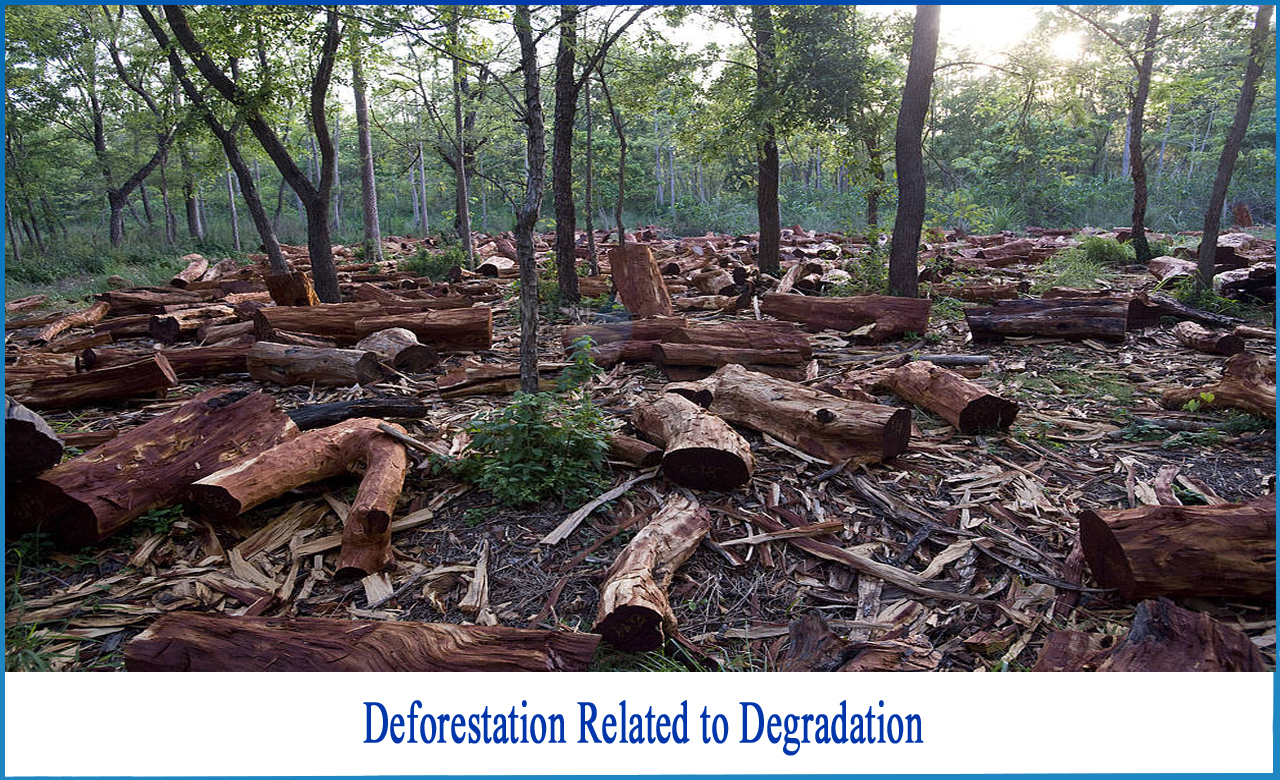The most serious dangers to forests around the world are deforestation and forest degradation. When forests are converted to non-forest uses, such as agriculture and road construction, deforestation happens. When forest ecosystems lose their ability to deliver critical goods and services to humans and environment, they are said to be degraded.
Since the 1960s, more than half of the world's tropical forests have been destroyed, and more than one hectare of tropical forest is destroyed or severely degraded every second. This strong and deadly strain on forests is not limited to the tropics; livestock, illnesses, forest fires, and other human-related activities are predicted to destroy the majority of India's forests.
HOW IS DEFORESTATION RELATED TO DEGRADATION?
· Soil erosion is directly linked to deforestation. The root systems of trees are extensive. The roots can often cover a larger area beneath the earth than they can above it. The roots reach deep into the ground like fingers. They grab the dirt. They penetrate like fingers. This protects the soil from being swept away by rain, strong winds, or flooding. Soil erosion, which is the most common cause of land deterioration, is actively prevented by forests.
· Forests have a strong bond with the area they call home. They are a component of nutrient cycling, which is one of the most critical processes in the ecosystem. For their physiological activities, trees absorb nutrients from the soil. When leaves fall off or a plant dies on the other hand, the nutrients are leached back into the soil. This process in that area will be shattered if woods are lost. As water infiltrates into the soil, nutrients are leached deep into the ground or washed away as the soil erodes.
· In certain situations, deforestation has resulted in full desertification of the land. A once fruitful location with a vibrant forest ecology has devolved into barren desert. Throughout history, this has been a key cause of great civilizations collapsing.
EFFECTS OF DEFORESTATION AND DEGRADATION:
1 BIODIVERSITY: Forests contain almost 80% of the world's terrestrial biodiversity, ranging from pine trees to tropical rainforests. Many species are threatened by forest degradation and loss, and forests are losing their ability to offer critical services such as clean air and water, healthy soils for agriculture, and climate regulation.
2 SUSTAINABLE LIVELIHOODS:Forests sustain the livelihoods of 1.6 billion people around the world, one billion of whom are among the poorest. Deforestation and forest degradation have real and practical consequences for these marginalised populations. The loss of healthy soil, for example, affects 52 percent of the land utilised for food production in a moderate or severe way. When trees are destroyed from a landscape, this results in an increase in food insecurity.
3 CLIMATE MITIGATION AND ADPATATION: The world's forests absorb 2.4 billion tonnes of CO2 every year, accounting for one-third of the CO2 released annually by burning fossil fuels. Forest deterioration releases more carbon into the atmosphere, generating 4.3–5.5 GtCO2eq/yr yearly, primarily due to deforestation and forest degradation. Protecting and repairing this massive carbon sink is critical for climate change mitigation.
Forests are also important in the fight against climate change. They serve as a food safety net during climate shocks, reduce disaster risks such as coastal flooding, and aid in the regulation of water flows and microclimates. Improving the health of these forest ecosystems and implementing sustainable management methods boosts human and natural systems' resistance to climate change's effects.




